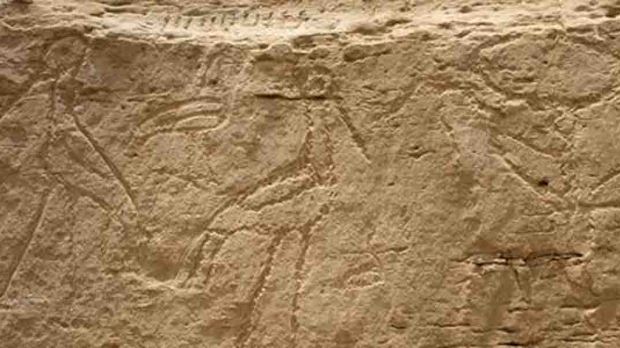Archaeologists on an expedition in the ancient Egyptian city of Elkab have discovered some of the earliest — and the largest — hieroglyphic inscriptions every recorded.
Dating from around 5,200 years ago, the inscriptions are seen as a major breakthrough for those studying ancient Egyptian writing systems.
“This newly discovered rock art site of El-Khawy preserves some of the earliest — and largest — signs from the formative stages of the hieroglyphic script and provides evidence for how the ancient Egyptians invented their unique writing system,” Yale Egyptologist John Coleman Darnell, who co-directs the Elkab Desert Survey Project, said.
While previously discovered hieroglyphics are about 1 or 2 centimeters high, these inscriptions are more like billboards, at 70 centimeters (27.5 inches high).
And the similarity to our modern billboards doesn’t end there. Not only were these inscriptions large enough to be seen from a distance, they were placed along heavily-trafficked routes, and were found by mapping out the network of roads in ancient Egypt.
“This was not what I was expecting to find when I set out on this period of work on the expedition,” says Darnell. “It was completely shocking to me.”
In addition to the script, archaeologists discovered rock art that included a rare depiction of a pregnant elephant in which one elephant was carved with a little elephant inside it.
The large writing was carved next to images which Darnell says “may express the concept of royal authority over the ordered cosmos.” The art included:
“animal images of a bull’s head on a short pole followed by two back-to-back saddlebill storks with a bald ibis bird above and between them. The arrangement of symbols is common in later Egyptian representations of the solar cycle and with the concept of luminosity.”

